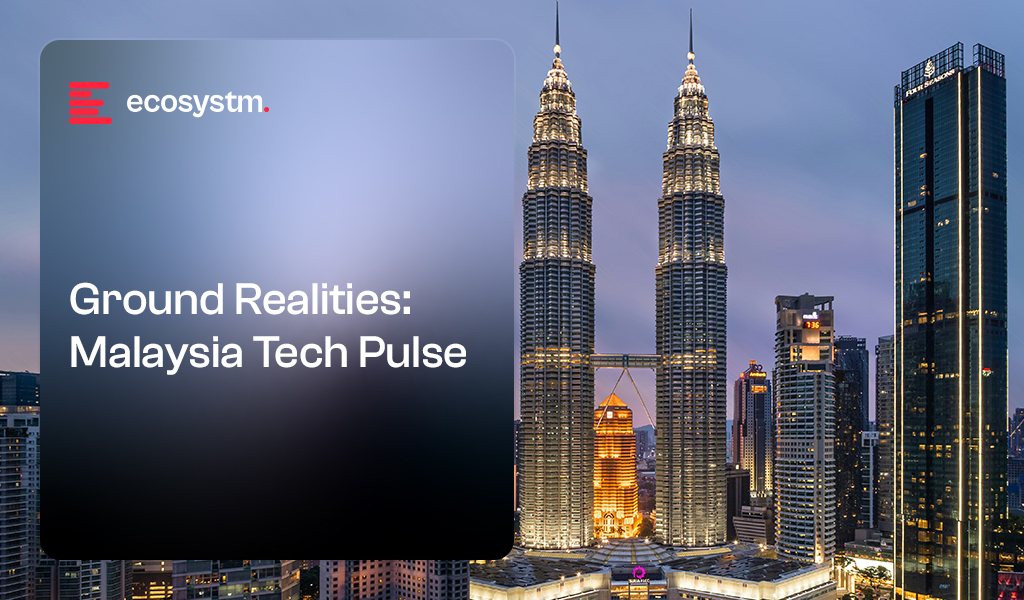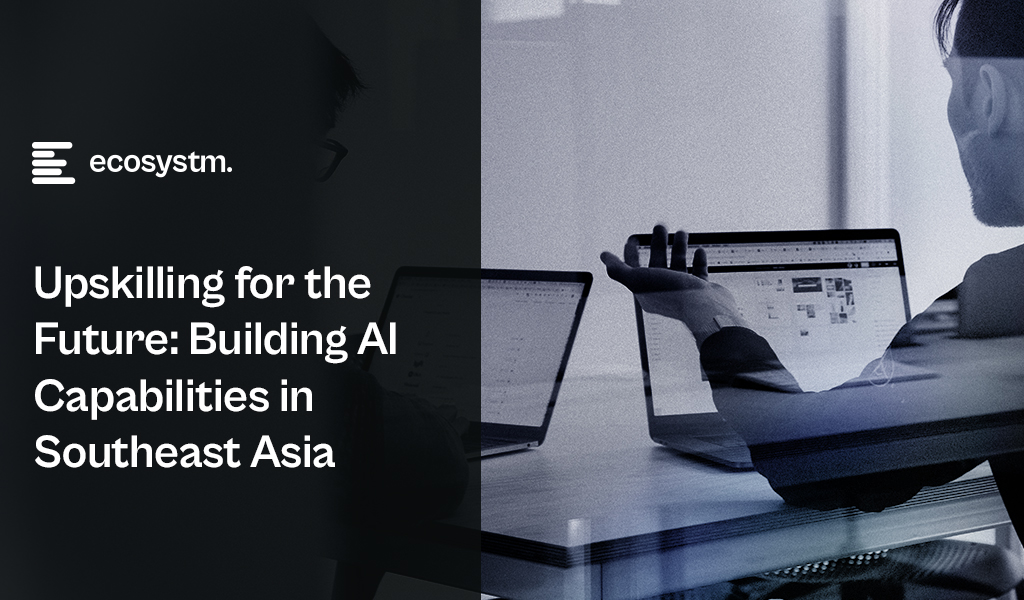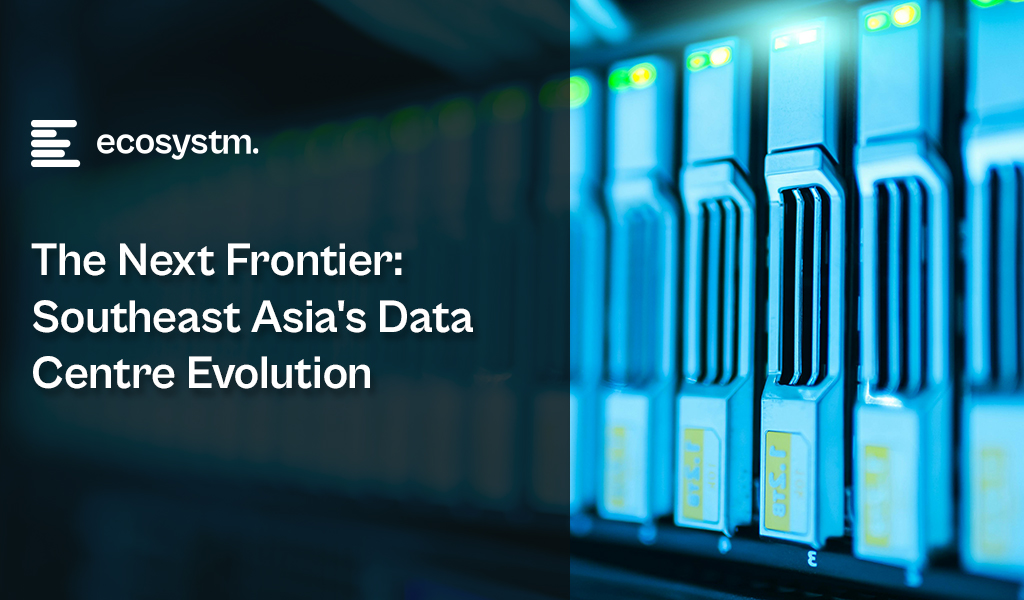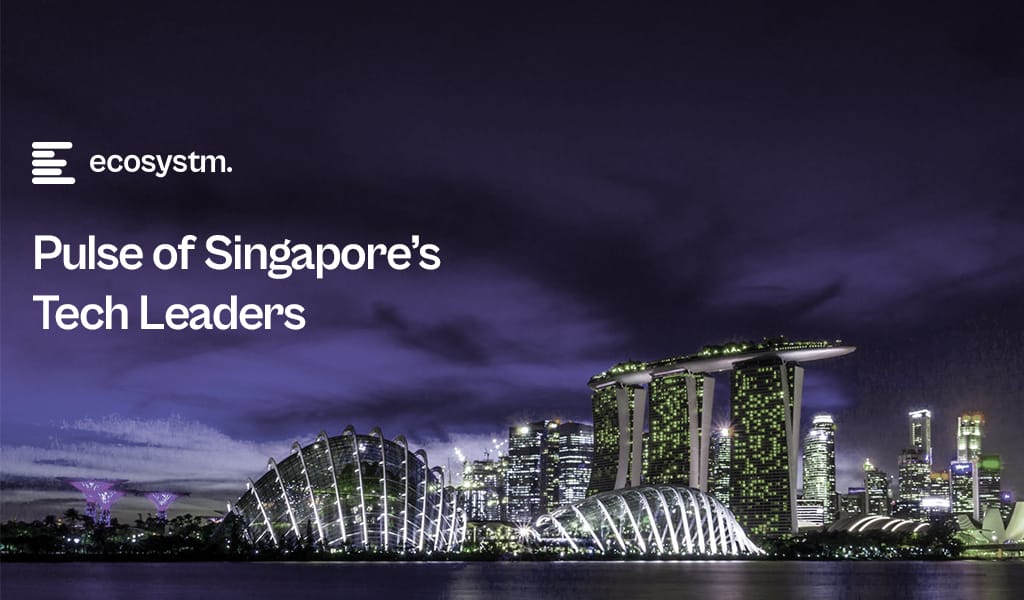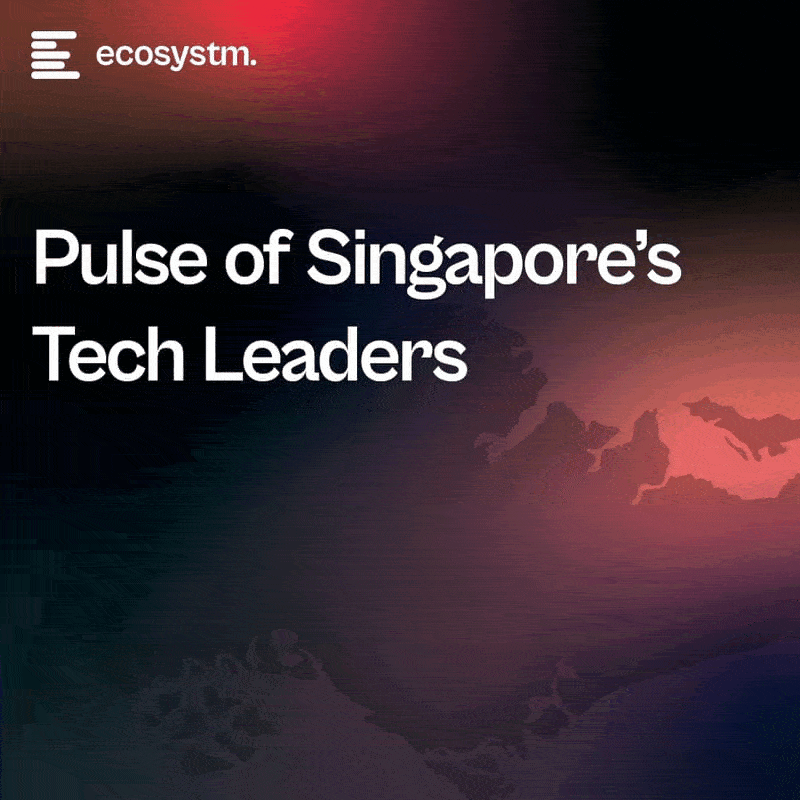Typically, business leaders rely on forecasts to secure budgets for achieving their goals and objectives. Forecasts take historical trends and project them forward, with added assumptions about what may or may not change in the market or operating environment.
But in today’s volatile economic and political climate, traditional forecasting is increasingly unreliable.
The threat of tariffs, actual tariffs, ongoing and emerging conflicts, political transitions and rising authoritarianism, along with the uncertain impact of AI on employment and productivity, are all undermining not just business and consumer confidence, but also supply chains and manufacturing capacity.
Look at the PC market in Asia Pacific. Shipments have traditionally been relatively straightforward to forecast; but in 2025, projections have swung from a 10% decline to 12% growth, and everything in between! These forecasts continue to shift month by month as market conditions evolve. The same applies to tech and non-tech products and services across many industries. Forecasts are no longer reliable or trustworthy.
So, if we cannot trust forecasts, what can we do to secure budget for our short-, medium- and longer-term initiatives? For many leaders, the answer is “Backcasting”.
When Forecasts Break Down, Backcasting Steps Up
Put simply, backcasting is creating a future vision, and building a plan to make that vision a reality.
For example, imagine you are the Asia Pacific Managing Director of a US-based software company aiming to move from the fifth to the second-largest provider in the region by 2030. To reach this goal, you’ll need to build specific capabilities such as adding distributors; expanding implementation and systems integration partners across ASEAN and India (which means strengthening your partner management team); increasing sales and account managers in tier 2 cities; and developing localised product versions and language support. You might also need to choose a different cloud provider to access certain markets like China and adapt your software to meet local regulations.
Backcasting helps you plan all these steps by starting with your 2030 goal and working backwards to create a clear roadmap to get there.
The benefit of backcasting over forecasting is that it gives your organisation defendable goals, targets and initiatives. It moves the thinking beyond the traditional quarterly targets to a longer-term vision. When global leaders ask you to cut budgets, it provides them with clear insight into how those cuts will affect the organisation’s success in Asia Pacific over the medium to long term. It also helps to understand which resources will help you achieve the longer-term goals and which will not.
Ultimately, backcasting is a better way of helping you defend your budgets from the tactical cuts and short-sighted strategies and sharpens your capability to deliver results in the longer term.
Want to Know More?
You can access a detailed report on backcasting: what it is, how it differs from traditional forecasting, and how it can be applied within your organisation. The report includes examples of companies using backcasting to shape strategic initiatives and support innovation, as well as a scenario outlining how an Asia Pacific tech vendor might use the approach to meet growing regional demands.
We have also helped clients start their backcasting journeys through targeted workshops, internal presentations, training programs and helping them set the backcasting strategy and processes in place. These services can support organisations at a strategic level, by aligning long-term plans with overarching goals; or at a team level, by helping functions like sales and marketing meet specific performance expectations.
We welcome your feedback – feel free to contact me or Alea Fairchild. If backcasting could support your organisation’s growth or budget planning, we’d be happy to connect via call or in person to discuss specific needs.
Here’s how we can help:
- Workshops. In-person or virtual workshops designed to build backcasting capabilities, such as setting long-term goals, creating roadmaps, and shifting focus from short-term tactics to strategic outcomes.
- Training (Internal Presentations & Webinars). Sessions to introduce teams to backcasting, explaining what it is, how it can be used, and why it supports more effective mid- to long-term planning.
- Client-Facing Presentations. Presentations tailored for clients and customers to show how backcasting can support their planning and investment decisions, potentially strengthening alignment with available solutions.
- Podcasts & Videos. Co-created audio or video content with leadership to explore how backcasting fits into current workflows, where the value lies, and how teams can tailor their efforts to organisational priorities.

Digital transformation in Malaysia has entered a new phase: less about bold roadmaps, more about fixing what’s broken. With the digital economy expected to reach 25.5% of GDP by 2025, the challenge now is turning strategy into results. Leaders aren’t chasing the next big thing – they are focused on integration bottlenecks, talent gaps, and showing real ROI.
The technology isn’t the problem; it’s making it stick. AI, cloud, and data platforms only deliver value when backed by the right systems, skills, and governance. From aviation to agriculture, organisations are being forced to rethink how they work, how they hire, and how they measure success.
Through a series of interviews and roundtable conversations with Malaysian business and tech leaders, Ecosystm heard firsthand what’s driving – and holding back – digital progress. These weren’t polished success stories, but honest reflections on what it really takes to move forward. The five themes below highlight where Malaysia’s transformation is gaining ground, where it’s getting stuck, and what’s needed to close the gap between ambition and execution.
Theme 1. Ecosystem Collaboration Is Driving Malaysia’s Digital Momentum
Malaysia’s digital transformation is being shaped not by individual breakthroughs, but by coordinated momentum across government, industry, and technology providers. This ecosystem-first approach is turning national ambitions into tangible outcomes. Flagship initiatives like JENDELA, Digital Nasional Berhad’s 5G rollout, and cross-agency digital infrastructure programs are laying the groundwork for smarter public services, connected industries, and inclusive digital access.
The Ministry of Digital (MyDigital) is taking a central role in aligning AI, 5G, and cybersecurity efforts under one roof – helping speed up policy execution and improve coordination between regulators and the private sector. Major tech players like Microsoft, Google, Nvidia, and AWS are responding with expanded investments in local cloud regions, chip design collaborations, and foundational AI services designed for Malaysian deployment environments.
What’s emerging is not just a policy roadmap, but a digitally integrated economy – where infrastructure rollouts, vendor innovation, and government leadership are advancing together. As Malaysia targets to create 500,000 new jobs and reach over 80% 5G population coverage, the strength of these partnerships will be critical in ensuring national strategies translate into sector-level execution.

Theme 2. Laying the Groundwork for Malaysia’s AI Economy
With over 90% of online content projected to be AI-generated by 2025, Malaysia faces growing urgency to ensure that the systems powering AI development are secure, interoperable, and locally relevant. This is about more than data sovereignty – it’s about building the infrastructure to support scalable, trusted, and sector-wide AI adoption.
The National AI Office (NAIO), under MyDigital, is leading efforts to align infrastructure with national priorities across healthcare, manufacturing, agriculture, and public services. Initiatives include supporting domestic data centres, enabling cross-sector cloud access, and establishing governance frameworks for responsible AI use.
The priority is no longer just adopting AI tools, but enabling Malaysia to develop, fine-tune, and deploy them on infrastructure that reflects local needs. Control over this ecosystem will shape how AI delivers value — from national security to inclusive fintech. To support this, Budget 2025 allocates USD 11.7 million for AI education and USD 4.2 million for the National AI Framework. Programs like AI Sandboxes, alongside emerging public-private partnerships, are helping bridge gaps in talent and tooling.
Together, these efforts are laying the foundation for an AI economy that is scalable, trusted, and anchored in Malaysia’s long-term digital ambitions.

Theme 3. Malaysia’s Enterprise AI Landscape: Still in Its Early Stages
Malaysian enterprises are actively exploring AI to drive competitiveness, but widespread, production-grade adoption remains limited. While leading banks are leveraging AI for fraud detection and digital onboarding, and manufacturers are exploring predictive maintenance and automation, many companies face barriers in scaling beyond pilots. Core challenges include siloed data systems, unclear return on investment, and limited in-house AI talent. Even when tools are available, businesses often lack the capacity to integrate them meaningfully into workflows.
Cost is another concern. AI implementation, especially when reliant on third-party platforms or cloud infrastructure, can be prohibitively expensive for mid-sized firms. Without a clear link to bottom-line improvement, AI investments are frequently deprioritised. There’s also lingering uncertainty around governance and compliance, which can further slow enterprise momentum.
For AI to scale across Malaysia, enterprise strategies must align with operational realities – offering cost-effective, localised solutions that deliver measurable value and inspire long-term confidence in digital transformation.

Theme 4. Building on Regulation to Achieve True Cyber Resilience
Malaysia is ramping up its cybersecurity strategy with a stronger regulatory backbone and ecosystem-wide initiatives. The upcoming Cyber Security Bill introduces mandatory breach notifications, sector-specific controls, and licensing for Managed Security Operations Centres (SOCs). Agencies like NACSA are driving protections across 11 critical sectors, while the Cybersecurity Centre of Excellence (CCoE) in Cyberjaya is scaling SOC analyst training in partnership with international players. These efforts are complemented by Malaysia’s leadership role in IMPACT, the UN’s cybersecurity hub, and participation in ASEAN-wide resilience initiatives.
Despite this progress, enterprise readiness remains inconsistent. Malaysian businesses faced an average of 74,000 cyberattacks per day in 2023, yet many still rely on outdated playbooks and fragmented systems. Cybersecurity is often viewed through a compliance lens – meeting audit requirements rather than preparing for real-time recovery. Investments are still skewed toward perimeter defences, while response protocols, cross-team coordination, and real-time observability are underdeveloped.
True resilience requires a shift in mindset: cybersecurity must be treated as a board-level business function. It must be operationalised through simulations, automated response frameworks, and enterprise-wide drills. In a threat landscape that is both persistent and sophisticated, Malaysia must evolve from regulatory compliance to strategic continuity – where recovery speed, not just prevention, becomes the defining metric of cyber maturity.

Theme 5. Malaysia’s Digital Transformation Is Being Led by Industry, Not Policy
While national strategies like the New Industrial Master Plan 2030 set out broad ambitions, real AI-led transformation in Malaysia is taking shape from the ground up, driven by industrial leaders tackling operational challenges with data. Manufacturing and Energy firms, which together contribute over 30% of Malaysia’s GDP, are ahead of the curve. Leaders are using AI for predictive maintenance, digital twins, logistics optimisation, and emissions tracking, often outpacing regulatory requirements.
In some cases, cloud platforms now process millions of machine data points daily to reduce downtime and lower costs at scale. What sets these firms apart is their focus on well-integrated, usable data. Rather than running isolated pilots, they’re building interoperable systems with shared telemetry, open APIs, and embedded analytics, with a focus on enabling AI that adapts in real time.
Malaysia’s next leap in transformation will hinge on whether the data discipline seen in leading industries can be replicated across less-digitised sectors.
If we consider Agriculture – still contributing 7-8% of GDP and employing nearly 10% of the workforce – we find that it remains digitally fragmented. While drones and IoT devices are collecting NDVI and soil data, much of it remains siloed or underutilised. Without clean data pipelines or national integration standards, AI struggles to move from demonstration to deployment.

A Moment to Redefine Ambition
Malaysia stands at a point where digital ambition must evolve into digital maturity. This means asking harder questions – not about what can be built, but what should be prioritised, sustained, and scaled. As capabilities deepen, the challenge is no longer innovation for its own sake, but ensuring technology serves long-term national resilience, equity, and competitiveness. The decisions made now will shape not just digital progress – but the kind of economy and society Malaysia becomes in the decade ahead.

Undersea cables form the invisible backbone of the modern internet, carrying vast amounts of data across continents and connecting billions of people. These vital arteries of global communication are, however, surprisingly vulnerable.
Hybrid Warfare at Sea
Recent incidents have highlighted the vulnerability of undersea infrastructure, particularly in the Baltic Sea. In the latest case, a fibre optic cable between Latvia and Sweden was reportedly severed by the dragging anchor of the cargo ship Vezhen, originating from Russia’s Ust-Luga port. Swedish authorities boarded and seized the vessel.
In December, the Eagle S Panamax oil tanker, sailing from St. Petersburg, allegedly damaged a power cable and three fibre optic cables between Estonia and Finland, as well as another connection between Finland and Germany. Finnish authorities seized the ship for investigation. A similar incident occurred in November when the Yi Peng 3, also from Ust-Luga, was linked to cable ruptures connecting Sweden to Lithuania and Finland to Germany. Although shadowed by the Royal Danish Navy, the vessel was ultimately allowed to continue its voyage.
The suspected sabotage of 11 undersea cables in 15 months has alarmed NATO countries, prompting increased surveillance around Europe. Patrols will focus on protecting critical assets like fibre optic cables, power lines, gas pipelines, and environmental sensors. Dubbed Baltic Sentry, the mission will deploy frigates, patrol aircraft, and unmanned naval drones, supported by NATO’s Maritime Centre for the Security of Critical Undersea Infrastructure. An AI system will monitor unusual shipping activity, such as loitering near cables or erratic course changes, aiming to cut response times to 30-60 minutes. Meanwhile, Operation Nordic Warden will analyse satellite imagery, patrol data, and Automatic Identification System (AIS) signals to assess risks in 22 key areas.
The primary concern is damage to infrastructure in the shallow waters of the Baltic Sea, but suspicious activity elsewhere has caught the attention of tech giants. Ireland, a critical hub for Europe’s cloud data centres, hosts undersea cables owned by companies like Google, Microsoft, and Amazon, linking it to the US and UK. As a non-NATO country, Ireland faces the challenge of monitoring over 3,000km of coastline. Recently, both the Irish Defence Forces and Royal Navy shadowed a Russian spy ship in the Irish Sea and English Channel. While cable damage is often immediately evident, the risk of communication taps is more alarming and harder to detect.
How Resilient Are Undersea Cable Networks?
There are about 400 undersea cables spanning over 1.3 million kms globally. According to the International Cable Protection Committee, around 200 incidents of cable damage occur annually, mostly caused by dragged anchors or trawling. Only about 10% result from natural causes like weather or wildlife. Near shorelines, cables are heavily protected and often buried under several metres of sand in shallow waters. However, in deeper seas, they are harder to monitor and safeguard.
Highly developed regions, such as the Baltic Sea, North Sea, and Irish Sea, rely on multiple redundant cables to maintain connections between countries. While severing a single link may reduce capacity and cause inconvenience, major disruptions are rare, even for remote European islands served by multiple cables.
Fibre optic cable repairs typically take days to weeks, faster than the lengthy timelines for fixing power cables or gas pipelines. Repair costs range from USD 1-3 million depending on the damage. Faults are located using test pulses, and specialised ships lift the damaged sections to the surface for splicing. However, with only 22 repair-designated cable ships worldwide, simultaneous outages could significantly delay restoration.
In regions with less cooperative neighbours, obtaining permissions can further slow repairs. For instance, cables crossing the South China Sea face increasing challenges in deployment and maintenance, complicating connections between ASEAN nations. Routing cables along longer coastal paths raises costs and impacts latency, adding further strain to the network.
Responding to Escalating Incidents
Plausible deniability and the opaque nature of maritime operations make attributing these events challenging. Nonetheless, NATO countries view them as part of Russia’s broader hybrid warfare strategy, which avoids direct confrontation while instilling fear and uncertainty by showcasing an adversary’s reach. Attacks on undersea cables undermine public trust in a government’s ability to protect critical infrastructure.
European governments initially downplayed the impact of these attacks, likely to minimise psychological effects and avoid escalation. While this cautious approach, coupled with rapid repairs, proved effective in the short term, it may have emboldened adversaries, leading to further incidents. In response, Sweden and Finland are now more willing to seize vessels in their territorial waters to deter both intentional and negligent actions.
Implications for Enterprise Networks
While enterprises cannot prevent damage to undersea infrastructure, they can mitigate risks and build resilient networks:
- Satellite Connectivity. Satellite internet services like Starlink and Eutelsat may not be ideal for bandwidth-intensive applications but can support critical services requiring international connections. An SD-WAN enables automatic failover to a redundant circuit if a land-based or undersea cable is disrupted.
- Dynamic Path Selection. Modern WAN architectures with dynamic path selection can reroute traffic to alternate cloud regions when primary paths are down. Locally available services can continue operating on domestic networks unaffected by international outages.
- Edge Computing. Adopting an edge-to-cloud strategy allows the running of select workloads closer to the edge or in local data centres. This reduces reliance on international links, improves resilience, and lowers latency.
- Disaster Recovery Planning. Enterprises should incorporate extended network outages into their disaster recovery plans, assessing the potential impact on operations and distinguishing between land-based, undersea, and other types of connections.

With over 70% of the world’s population predicted to live in cities by 2050, smart cities that use data, technology, and AI to streamline services are key to ensuring a healthy and safe environment for all who live, work, or visit them.
Fueled by rapid urbanisation, Southeast Asia is experiencing a smart city boom with an estimated 100 million people expected to move from rural areas to cities by 2030.
Despite their diverse populations and varying economic stages, ASEAN member countries are increasingly on the same page: they are all united by the belief that smart cities offer a solution to the complex urban and socio-economic challenges they face.
Read on to discover how Southeast Asian countries are using new tools to manage growth and deliver a better quality of life to hundreds of millions of people.
ASCN: A Network for Smarter Cities
The ASEAN Smart Cities Network (ASCN) is a collaborative platform where cities in the region exchange insights on adopting smart technology, finding solutions, and involving industry and global partners. They work towards the shared objective of fostering sustainable urban development and enhancing livability in their cities.
As of 2024, the ASCN includes 30 members, with new additions from Thailand and Indonesia.
“The ASEAN Smart Cities Network provides the sort of open platform needed to drive the smart city agenda. Different cities are at different levels of developments and “smartness” and ASEAN’s diversity is well suited for such a network that allows for cities to learn from one another.”
Taimur Khilji
UNITED NATIONS DEVELOPMENT PROGRAMME (UNDP)
Singapore’s Tech-Driven Future
The Smart Nation Initiative harnesses technology and data to improve citizens’ lives, boost economic competitiveness, and tackle urban challenges.
Smart mobility solutions, including sensor networks, real-time traffic management, and integrated public transportation with smart cards and mobile apps, have reduced congestion and travel times.
Ranked 5th globally and Asia’s smartest city, Singapore is developing a national digital twin to for better urban management. The 3D maps and subsurface model, created by the Singapore Land Authority, will help in managing infrastructure and assets.
The Smart City Initiative promotes sustainability with innovative systems like automated pneumatic waste collection and investments in water management and energy-efficient solutions.
Malaysia’s Holistic Smart City Approach
With aspirations to become a Smart Nation by 2040 (outlined in their Fourth National Physical Plan – NPP4), Malaysia is making strides.
Five pilot cities, including Kuala Lumpur and Johor Bahru, are testing the waters by integrating advanced technologies to modernise infrastructure.
Pilots embrace sustainability, with projects like Gamuda Cove showcasing smart technologies for intelligent traffic management and centralised security within eco-friendly developments.
Malaysia’s Smart Cities go beyond infrastructure, adopting international standards like the WELL Building Standard to enhance resident health, well-being, and productivity. The Ministry of Housing and Local Government, collaborating with PLANMalaysia and the Department of Standards Malaysia, has established clear indicators for Smart City development.
Indonesia’s Green Smart City Ambitions
Eyeing carbon neutrality by 2060, Indonesia is pushing its Smart City initiatives.
Their National Long-Term Development Plan prioritises economic growth and improved quality of life through digital infrastructure and innovative public services.
The goal is 100 smart cities that integrate green technology and sustainable infrastructure, reflecting their climate commitment.
Leaving behind congested Jakarta, Indonesia is building Nusantara, the world’s first “smart forest city“. Spanning 250,000 hectares, Nusantara will boast high-capacity infrastructure, high-speed internet, and cutting-edge technology to support the archipelago’s activities.
Thailand’s Smart City Boom
Thailand’s national agenda goes big on smart cities.
They aim for 105 smart cities by 2027, with a focus on transportation, environment, and safety.
Key projects include:
- USD 37 billion smart city in Huai Yai with business centres and housing for 350,000.
- A 5G-powered smart city in Ban Chang for enhanced environmental and traffic management.
- USD $40 billion investment to create a smart regional financial centre across Chonburi, Rayong, and Chachoengsao.
Philippines Fights Urban Challenges with Smart Solutions
By 2050, population in cities is expected to soar to nearly 102 million – twice the current figure.
A glimmer of optimism emerges with the rise of smart city solutions championed by local governments (LGUs).
Rapid urbanisation burdens the Philippines with escalating waste. By 2025, daily waste production could reach a staggering 28,000 tonnes. Smart waste management solutions are being implemented to optimise collection and reduce fuel consumption.
Smart city developer Iveda is injecting innovation. Their ambitious USD 5 million project brings AI-powered technology to cities like Cebu, Bacolod, Iloilo, and Davao. The focus: leverage technology to modernise airports, roads, and sidewalks, paving the way for a more sustainable and efficient urban future.

Southeast Asia’s massive workforce – 3rd largest globally – faces a critical upskilling gap, especially with the rise of AI. While AI adoption promises a USD 1 trillion GDP boost by 2030, unlocking this potential requires a future-proof workforce equipped with AI expertise.
Governments and technology providers are joining forces to build strong AI ecosystems, accelerating R&D and nurturing homegrown talent. It’s a tight race, but with focused investments, Southeast Asia can bridge the digital gap and turn its AI aspirations into reality.
Read on to find out how countries like Singapore, Thailand, Vietnam, and The Philippines are implementing comprehensive strategies to build AI literacy and expertise among their populations.
Download ‘Upskilling for the Future: Building AI Capabilities in Southeast Asia’ as a PDF
Big Tech Invests in AI Workforce
Southeast Asia’s tech scene heats up as Big Tech giants scramble for dominance in emerging tech adoption.
Microsoft is partnering with governments, nonprofits, and corporations across Indonesia, Malaysia, the Philippines, Thailand, and Vietnam to equip 2.5M people with AI skills by 2025. Additionally, the organisation will also train 100,000 Filipino women in AI and cybersecurity.
Singapore sets ambitious goal to triple its AI workforce by 2028. To achieve this, AWS will train 5,000 individuals annually in AI skills over the next three years.
NVIDIA has partnered with FPT Software to build an AI factory, while also championing AI education through Vietnamese schools and universities. In Malaysia, they have launched an AI sandbox to nurture 100 AI companies targeting USD 209M by 2030.
Singapore Aims to be a Global AI Hub
Singapore is doubling down on upskilling, global leadership, and building an AI-ready nation.
Singapore has launched its second National AI Strategy (NAIS 2.0) to solidify its global AI leadership. The aim is to triple the AI talent pool to 15,000, establish AI Centres of Excellence, and accelerate public sector AI adoption. The strategy focuses on developing AI “peaks of excellence” and empowering people and businesses to use AI confidently.
In keeping with this vision, the country’s 2024 budget is set to train workers who are over 40 on in-demand skills to prepare the workforce for AI. The country will also invest USD 27M to build AI expertise, by offering 100 AI scholarships for students and attracting experts from all over the globe to collaborate with the country.
Thailand Aims for AI Independence
Thailand’s ‘Ignite Thailand’ 2030 vision focuses on boosting innovation, R&D, and the tech workforce.
Thailand is launching the second phase of its National AI Strategy, with a USD 42M budget to develop an AI workforce and create a Thai Large Language Model (ThaiLLM). The plan aims to train 30,000 workers in sectors like tourism and finance, reducing reliance on foreign AI.
The Thai government is partnering with Microsoft to build a new data centre in Thailand, offering AI training for over 100,000 individuals and supporting the growing developer community.
Building a Digital Vietnam
Vietnam focuses on AI education, policy, and empowering women in tech.
Vietnam’s National Digital Transformation Programme aims to create a digital society by 2030, focusing on integrating AI into education and workforce training. It supports AI research through universities and looks to address challenges like addressing skill gaps, building digital infrastructure, and establishing comprehensive policies.
The Vietnamese government and UNDP launched Empower Her Tech, a digital skills initiative for female entrepreneurs, offering 10 online sessions on GenAI and no-code website creation tools.
The Philippines Gears Up for AI
The country focuses on investment, public-private partnerships, and building a tech-ready workforce.
With its strong STEM education and programming skills, the Philippines is well-positioned for an AI-driven market, allocating USD 30M for AI research and development.
The Philippine government is partnering with entities like IBPAP, Google, AWS, and Microsoft to train thousands in AI skills by 2025, offering both training and hands-on experience with cutting-edge technologies.
The strategy also funds AI research projects and partners with universities to expand AI education. Companies like KMC Teams will help establish and manage offshore AI teams, providing infrastructure and support.

ASEAN, poised to become the world’s 4th largest economy by 2030, is experiencing a digital boom. With an estimated 125,000 new internet users joining daily, it is the fastest-growing digital market globally. These users are not just browsing, but are actively engaged in data-intensive activities like gaming, eCommerce, and mobile business. As a result, monthly data usage is projected to soar from 9.2 GB per user in 2020 to 28.9 GB per user by 2025, according to the World Economic Forum. Businesses and governments are further fuelling this transformation by embracing Cloud, AI, and digitisation.
Investments in data centre capacity across Southeast Asia are estimated to grow at a staggering pace to meet this growing demand for data. While large hyperscale facilities are currently handling much of the data needs, edge computing – a distributed model placing data centres closer to users – is fast becoming crucial in supporting tomorrow’s low-latency applications and services.
The Big & the Small: The Evolving Data Centre Landscape
As technology pushes boundaries with applications like augmented reality, telesurgery, and autonomous vehicles, the demand for ultra-low latency response times is skyrocketing. Consider driverless cars, which generate a staggering 5 TB of data per hour and rely heavily on real-time processing for split-second decisions. This is where edge data centres come in. Unlike hyperscale data centres, edge data centres are strategically positioned closer to users and devices, minimising data travel distances and enabling near-instantaneous responses; and are typically smaller with a capacity ranging from 500 KW to 2 MW. In comparison, large data centres have a capacity of more than 80MW.
While edge data centres are gaining traction, cloud-based hyperscalers such as AWS, Microsoft Azure, and Google Cloud remain a dominant force in the Southeast Asian data centre landscape. These facilities require substantial capital investment – for instance, it took almost USD 1 billion to build Meta’s 150 MW hyperscale facility in Singapore – but offer immense processing power and scalability. While hyperscalers have the resources to build their own data centres in edge locations or emerging markets, they often opt for colocation facilities to familiarise themselves with local markets, build out operations, and take a “wait and see” approach before committing significant investments in the new market.
The growth of data centres in Southeast Asia – whether edge, cloud, hyperscale, or colocation – can be attributed to a range of factors. The region’s rapidly expanding digital economy and increasing internet penetration are the prime reasons behind the demand for data storage and processing capabilities. Additionally, stringent data sovereignty regulations in many Southeast Asian countries require the presence of local data centres to ensure compliance with data protection laws. Indonesia’s Personal Data Protection Law, for instance, allows personal data to be transferred outside of the country only where certain stringent security measures are fulfilled. Finally, the rising adoption of cloud services is also fuelling the need for onshore data centres to support cloud infrastructure and services.
Notable Regional Data Centre Hubs
Singapore. Singapore imposed a moratorium on new data centre developments between 2019 to 2022 due to concerns over energy consumption and sustainability. However, the city-state has recently relaxed this ban and announced a pilot scheme allowing companies to bid for permission to develop new facilities.
In 2023, the Singapore Economic Development Board (EDB) and the Infocomm Media Development Authority (IMDA) provisionally awarded around 80 MW of new capacity to four data centre operators: Equinix, GDS, Microsoft, and a consortium of AirTrunk and ByteDance (TikTok’s parent company). Singapore boasts a formidable digital infrastructure with 100 data centres, 1,195 cloud service providers, and 22 network fabrics. Its robust network, supported by 24 submarine cables, has made it a global cloud connectivity leader, hosting major players like AWS, Azure, IBM Softlayer, and Google Cloud.
Aware of the high energy consumption of data centres, Singapore has taken a proactive stance towards green data centre practices. A collaborative effort between the IMDA, government agencies, and industries led to the development of a “Green Data Centre Standard“. This framework guides organisations in improving data centre energy efficiency, leveraging the established ISO 50001 standard with customisations for Singapore’s context. The standard defines key performance metrics for tracking progress and includes best practices for design and operation. By prioritising green data centres, Singapore strives to reconcile its digital ambitions with environmental responsibility, solidifying its position as a leading Asian data centre hub.
Malaysia. Initiatives like MyGovCloud and the Digital Economy Blueprint are driving Malaysia’s public sector towards cloud-based solutions, aiming for 80% use of cloud storage. Tenaga Nasional Berhad also established a “green lane” for data centres, solidifying Malaysia’s commitment to environmentally responsible solutions and streamlined operations. Some of the big companies already operating include NTT Data Centers, Bridge Data Centers and Equinix.
The district of Kulai in Johor has emerged as a hotspot for data centre activity, attracting major players like Nvidia and AirTrunk. Conditional approvals have been granted to industry giants like AWS, Microsoft, Google, and Telekom Malaysia to build hyperscale data centres, aimed at making the country a leading hub for cloud services in the region. AWS also announced a new AWS Region in the country that will meet the high demand for cloud services in Malaysia.
Indonesia. With over 200 million internet users, Indonesia boasts one of the world’s largest online populations. This expanding internet economy is leading to a spike in the demand for data centre services. The Indonesian government has also implemented policies, including tax incentives and a national data centre roadmap, to stimulate growth in this sector.
Microsoft, for instance, is set to open its first regional data centre in Thailand and has also announced plans to invest USD 1.7 billion in cloud and AI infrastructure in Indonesia. The government also plans to operate 40 MW of national data centres across West Java, Batam, East Kalimantan, and East Nusa Tenggara by 2026.
Thailand. Remote work and increasing online services have led to a data centre boom, with major industry players racing to meet Thailand’s soaring data demands.
In 2021, Singapore’s ST Telemedia Global Data Centres launched its first 20 MW hyperscale facility in Bangkok. Soon after, AWS announced a USD 5 billion investment plan to bolster its cloud capacity in Thailand and the region over the next 15 years. Heavyweights like TCC Technology Group, CAT Telecom, and True Internet Data Centre are also fortifying their data centre footprints to capitalise on this explosive growth. Microsoft is also set to open its first regional data centre in the country.
Conclusion
Southeast Asia’s booming data centre market presents a goldmine of opportunity for tech investment and innovation. However, navigating this lucrative landscape requires careful consideration of legal hurdles. Data protection regulations, cross-border data transfer restrictions, and local policies all pose challenges for investors. Beyond legal complexities, infrastructure development needs and investment considerations must also be addressed. Despite these challenges, the potential rewards for companies that can navigate them are substantial.

Data & AI initiatives are firmly at the core of any organisation’s tech-led transformation efforts. Businesses today realise the value of real-time data insights to deliver the agility that is required to succeed in today’s competitive, and often volatile, market.
But organisations continue to struggle with their data & AI initiatives for a variety of reasons. Organisations in ASEAN report some common challenges in implementing successful data & AI initiatives.
Here are 5 insights to build scalable AI.
- Data Access a Key Stumbling Block. Many organisations find that they no longer need to rely on centralised data repositories.
- Organisations Need Data Creativity. A true data-first organisation derives value from their data & AI investments across the entire organisation, cross-leveraging data.
- Governance Not Built into Organisational Psyche. A data-first organisation needs all employees to have a data-driven mindset. This can only be driven by clear guidelines that are laid out early on and adhered to by data generators, managers, and consumers.
- Lack of End-to-End Data Lifecycle Management. It is critical to have observability, intelligence, and automation built into the entire data lifecycle.
- Democratisation of Data & AI Should Be the Goal. The true value of data & AI solutions will be fully realised when the people who benefit from the solutions are the ones managing the solutions and running the queries that will help them deliver better value to the business.
Read below to find out more.
Download 5 Insights to Help Organisations Build Scalable AI – An ASEAN View as a PDF

Organisations are being driven to develop and demonstrate an ESG consciousness and a sustainability commitment in their actions and investments – by their customers, investors and by governments’ sustainability mandates. Early adopter organisations often realise several benefits – from achieving better financial outcomes to creating competitive differentiation. However, more organisations need to get serious about their sustainability journeys – and as regulations firm up, organisations will be forced to report on their sustainability initiatives.
The Ecosystm Kyndryl ASEAN Digital Transformation Study 2022 was launched earlier this year to understand the pulse of C-level leaders and the business and technology transformation goals of organisations in the ASEAN region. This included a closer look on where organisations stand when it comes to setting sustainability goals and strategies, and their key challenges.
Here are 5 insights on the state of the Sustainable Organisation in ASEAN.
Download 5 Insights on the State of the Sustainable Organisation – An ASEAN View as a PDF




